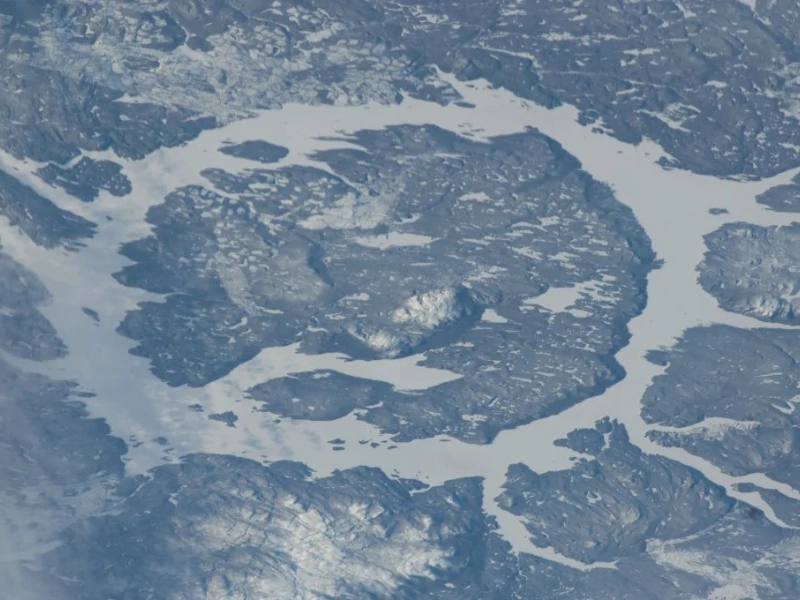These 10 Massive Craters Show How Close We've Come!
Advertisement
5. Manicouagan Crater (Canada)

Advertisement
One of the most strikingly aesthetically pleasing and scientifically important impact structures on Earth, the Manicouagan Crater is found in Quebec, Canada Created during the Late Triassic period some 214 million years ago, this crater is evidence of the great forces involved in cosmic impacts and their long-lasting consequences on the geology of our planet. Visible from orbit, the ring-shaped lake of the crater—known as Lake Manicouagan or the "Eye of Quebec—has become a famous image in impact crater research.
Although erosion over millions of years has lessened its apparent size, the Manicouagan impact structure once measured over 100 kilometres (62 miles) in circumference. Estimated to have been around 5 kilometres (3 miles) in diameter, the impactor that produced this crater struck Earth with a force comparable to millions of megatons of TNT. The energy emitted by this collision would have caused extensive destruction and maybe contributed to a minor extinction event occurring concurrently.
Millions of years of erosion and glacial action have produced the present look of the crater. Typical of big impact structures, the crater's central peak has been reduced to create a ring of islands in the middle of Lake Manicouagan. From above, the lake itself presents an eye-like form by occupying an annular depression surrounding this centre rise. The Manicouagan Crater is a significant location for research on the long-term development of impact formations on Earth because of its particular topography.
Geologically speaking, the Manicouagan Crater provides a treasure of data on impact processes and how they affect the crust of the Earth. The impact melted and distorted the target rocks, producing a range of shock metamorphic traits unique of hypervelocity strikes. These comprise pseudotachylite (fractional melt rock), planar deformation patterns in quartz, and shatter cones. Our knowledge of impact cratering mechanics and the harsh circumstances produced during such occurrences has much benefited from the investigation of these characteristics.
Near the conclusion of the Triassic epoch, the Manicouagan impact event happened during a pivotal junctural point in Earth's history. Although the link is still up for question, this date has led some scientists to look at whether the impact might have had a part in the Triassic-Jurassic extinction event. Still, the crater offers insightful analysis of the possible environmental and climatic consequences of major impact events across the history of Earth.
The Manicouagan Crater fulfils several uses nowadays. Attracting geologists and planetary scientists interested in its distinctive characteristics, it is still a major venue for scientific study. Hydroelectric power generation makes use of the area as well; dams built on the rivers running into and out of Lake Manicouagan generate electricity. Furthermore a point of attraction for eco-tourism and educational initiatives is the crater's spectacular look and scientific relevance, which lets guests see personally the dramatic results of an old cosmic collision.
The Manicouagan Crater's preservation and research help us to better grasp impact events and their influence on planetary surfaces all over the solar system. One of the best-preserved big impact structures on Earth, it keeps offering useful information for comparison with impact craters on other planets and moons, so enabling scientists to reconstruct the impact history of our solar system and better grasp the processes influencing the surfaces of planetary bodies over billions of years.
Advertisement
You May Like

